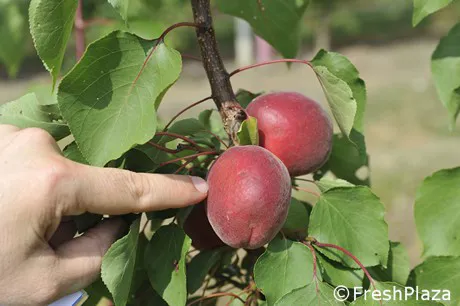Watch the video on how to harvest red apricots
Enrico Zanzi
"This actually applies to all summer fruit - everything depends on harvesting and eating ripeness," explained Enrico Zanzi from Vivai F.lli Zanzi.
"These apricots become red 20 days before ripening, therefore they seem ready before they actually are. Producers will need to pay great attention and cooperatives and POs will have to train them."
Harvesting must be carried out in three rounds starting from the top of the tree as, just like with all stone fruits, fruits start to ripen from the top.

These indications are to be taken seriously. As these varieties will not be club varieties, anyone will be able to plant them and untrained producers might decide to harvest early, thinking they might get a higher price. However, should the rumour spread that red apricots are not nice to eat, consumers would lose their trust in them.
Except in the case of direct sales or wholesale markets, apricots destined for export need to last longer. Rubyngo fruits last well on trees and have a good post-harvest shelf-life, but producers need to learn when to harvest to have fruits that are nice to eat and that can last long enough to be exported.
